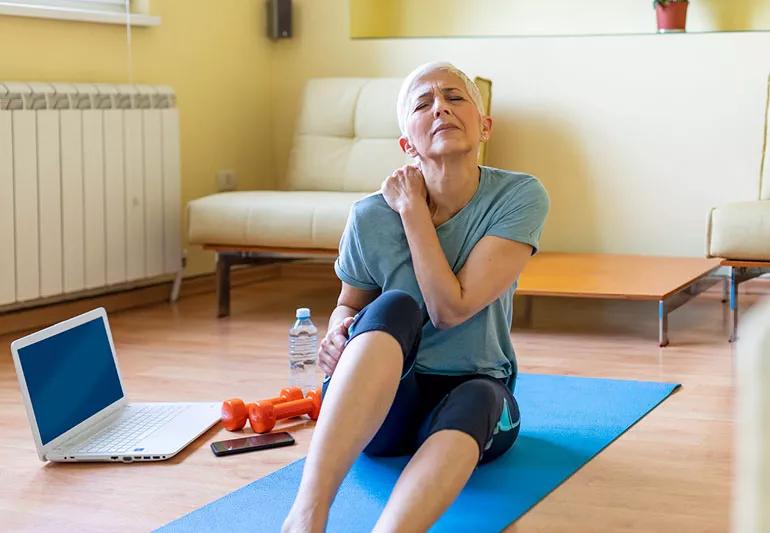The short answer from a fibromyalgia expert

A: Fibromyalgia is one of the most common reasons for chronic pain, affecting about 4 million Americans. It’s also one of the most misunderstood.
Advertisement
Cleveland Clinic is a non-profit academic medical center. Advertising on our site helps support our mission. We do not endorse non-Cleveland Clinic products or services. Policy
The most common myth is that fibromyalgia is “all in your head.” People who suffer from fibromyalgia are afraid that people around them don’t believe that it’s a real disease and are afraid they will be labeled as lazy. Education goes a long way toward helping people with fibromyalgia and their loved ones understand and deal with this debilitating illness.
Often, family members and friends don’t understand what a patient is going through or what the diagnosis means. It’s easy for people to understand that recovering from surgery or a broken bone is painful. However, it’s harder to grasp the generalized pain and fatigue of fibromyalgia. To help combat family members or friends who are in doubt, arm yourself with the facts about your condition and share it with them.
For most cases, fibromyalgia doesn’t respond to purely medical care or purely psychiatric care. Fibromyalgia can create a vicious cycle of symptoms like anxiety, depression and disturbed sleep. The brain then becomes wired in stress mode and that triggers tenderness, pain, fatigue and cognitive difficulties that further increase stress and anxiety.
If you have fibromyalgia, take control of your treatment by managing stress, exercising, managing your weight and getting involved in your community. It’s crucial to address stressors and how you respond to stress.
Advertisement
The American Fibromyalgia Syndrome Association recommends starting with mild exercise in short intervals (such as five minutes at a time) to keep the muscles fit while not over-taxing them. A multidisciplinary approach with physical therapy, pain psychology and even sleep medicine are often needed. Lastly, live as much of a regular life as you can. People who are working, volunteering or doing something that gives them a sense of fulfillment do much better.
—Rheumatologist Carmen Gota, MD
Advertisement
Learn more about our editorial process.
Advertisement

The causes of fibromyalgia are complex, but an overactive immune system might be part of it

Pain is the distinguishing factor for determining if you have fibromyalgia

Setting the record straight: Diagnosis, treatment + more

This chronic condition most commonly causes pelvic pain and severe cramping during periods, but it can bring other types of pain symptoms, too

Your knees could be hurting at bedtime because of inflammation, injury or some other condition that gets worse with pressure and positioning

Looking down at your smartphone or computer screen can stress muscles in your neck, shoulders and back

Leg-related symptoms indicate DVT, while chest symptoms point to a pulmonary embolism

Eat foods that are high in protein and low in animal fat and simple sugar

Start having sex about 72 hours before ovulation, then at least every other day during your fertile window

Attachment theory suggests that your earliest relationships shape connections throughout your life

It isn’t a recognized mental health disorder, but research shows that problematic social media use can negatively affect your mental health, self-esteem and sleep